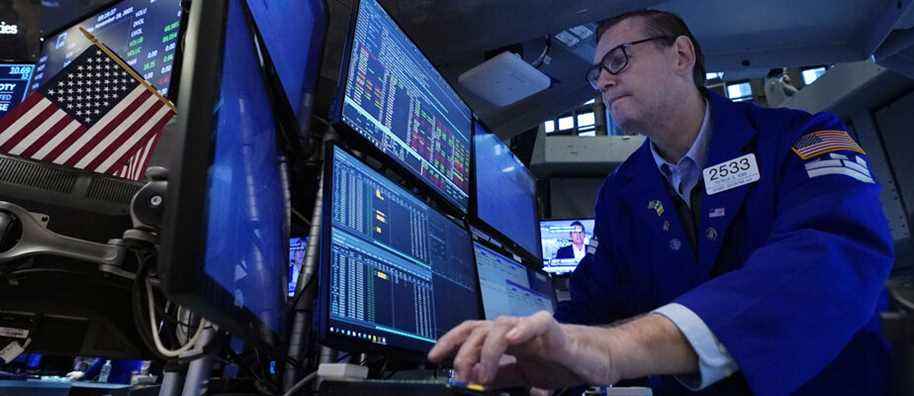(New York) The New York Stock Exchange ended a volatile session on Monday after Jerome Powell was reappointed as the head of the Fed, the Dow Jones remaining stable while the NASDAQ fell.
According to final results, the Dow Jones index pegged 0.05% to 35,619.25 points after rising sharply in session on news of President Joe Biden’s confirmation, which he renamed Jerome Powell to his post at the head of the Federal Reserve.
The NASDAQ, where technology stocks more sensitive to the prospect of rising rates are concentrated, fell 1.26% to 15,854.76 points. The S&P 500 index fell 0.32% to 4,682.94 points.
These two indices had initially also reacted with enthusiasm to the nomination of Jerome Powell, exceeding their records in session before falling back.
Leaders in the S & P / TSX Composite Index were energy and financials, but declines elsewhere more than weighed on their gains as nine of the top 11 sectors fell, led by technology and healthcare .
The main Canadian stock index closed 134.26 points lower, at 21,420.77, for its worst day since October 29.
This turnaround in the indices came with the sharp pressure on bond market interest rates following the announcement of Mr. Powell’s confirmation.
According to Christopher Vecchio, analyst for the specialist site DailyFX, “in recent days, Fed officials have suggested that the pace of reduction in asset purchases could increase in 2022 and with the re-appointment of Jerome Powell, it seems that the market is starting to integrate this eventuality into its prices ”.
“The markets are therefore seeing Jerome Powell adopt a slightly more aggressive stance vis-à-vis the withdrawal of monetary support measures and finally act on rates to control inflation during the first half of next year,” he said. estimated the analyst.
The prospect of a potentially sooner-than-expected rate hike pushed yields on 10-year Treasuries to 1.62% from 1.54%. And above all, those on two-year bonds, more sensitive to short-term rates, which went from 0.50% to 0.58%, the highest since March 2020.
This pressure on rates also supported the dollar, which posted a 17-month high against the euro.
Sensitive to interest rates, investors have turned away from so-called growth stocks because they need low rates to generate the growth on which their stock market valuation is based.
NASDAQ heavyweights if any, Amazon dropped 2.83% to $ 3,572 and Google lost 1.92% to $ 2,941. Netflix fell 2.89%, Meta (Facebook) fell 1.24%. The NASDAQ returned Monday from two consecutive record breaking sessions.
This mixed session is the first of a shortened week, which will see markets closed Thursday for the Thanksgiving holiday and experience a shortened session Friday, for Black Friday which kicks off the year-end shopping season.
Among the eagerly awaited indicators this week is inflation for October, according to the PCE index, the Fed’s favorite barometer, which will be published on Wednesday with consumer spending, another figure closely watched by investors.
In the background, investors also remained concerned about “the rise in cases of COVID-19 in Europe and the United States”, also underlined Peter Cardillo of Spartan Capital Securities.
Of the eleven sectors of the S&P 500, six remained in the green, starting with the energy sector (+ 1.77%) and banking stocks (+ 1.43%), thanks to the rise in bond rates. The communication and information technology sector was the red lantern (-1.24%).
Electric vehicle maker Rivian, which stormed onto the stock market last week, fell 8.16% to $ 118.11 as it must abandon its alliance with Ford to build an electric vehicle.
with The Canadian Press
